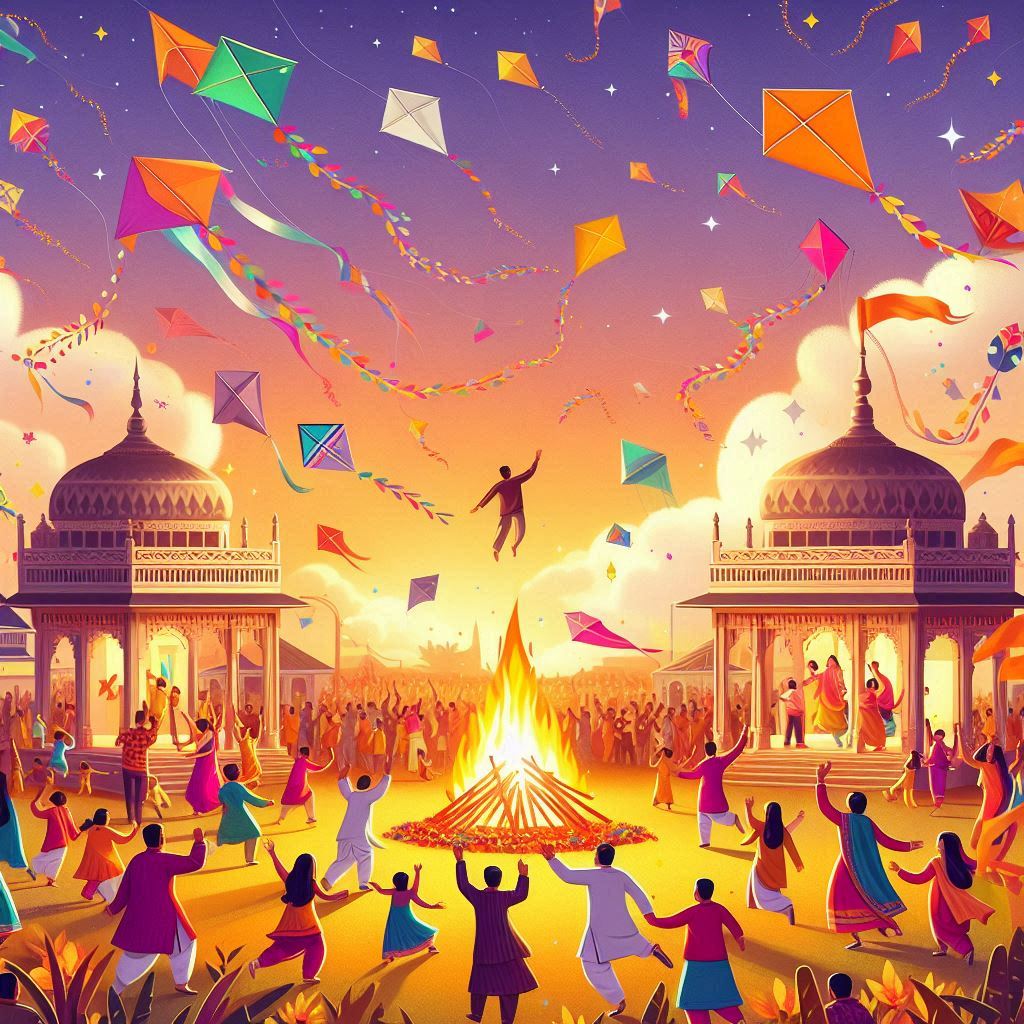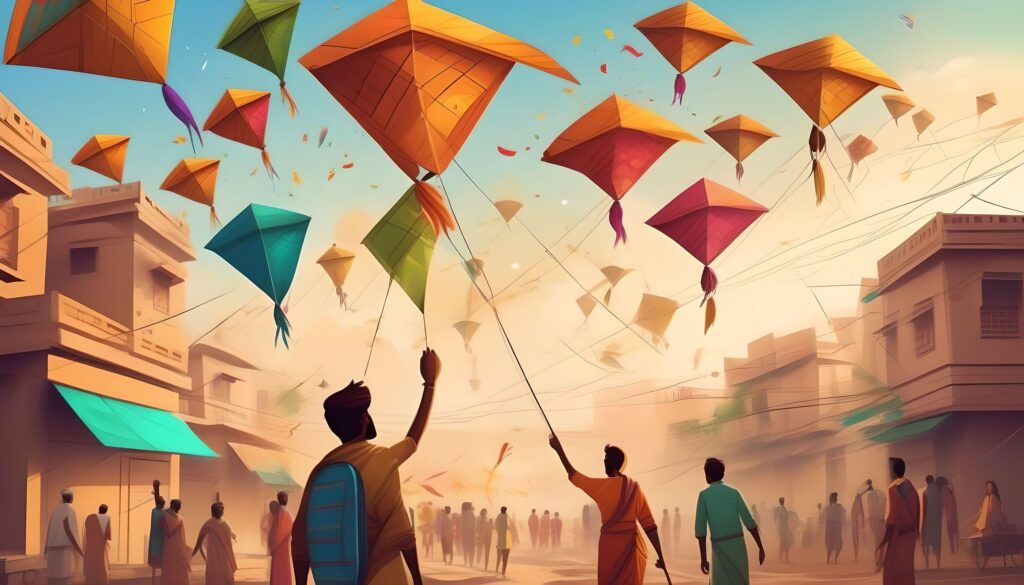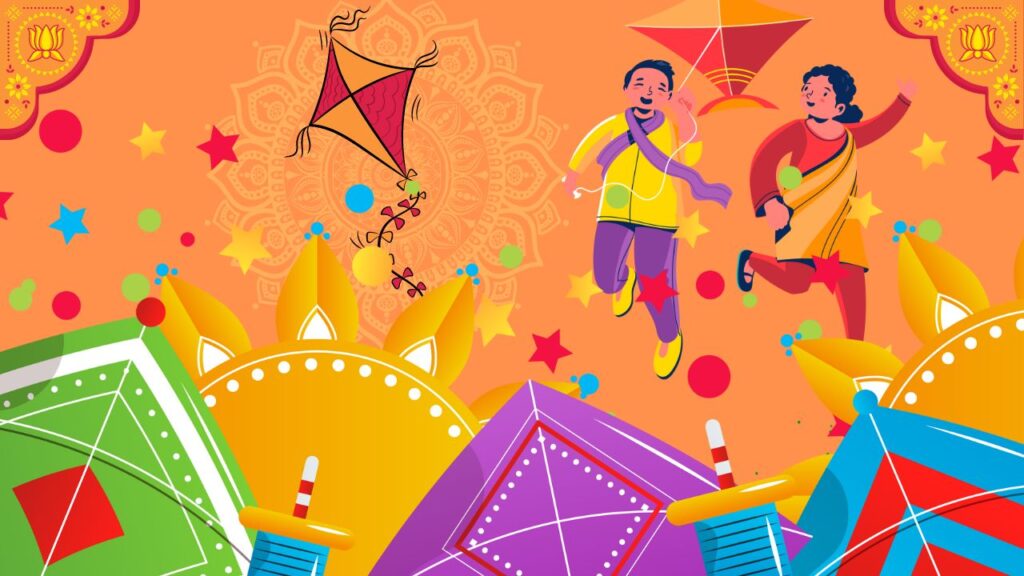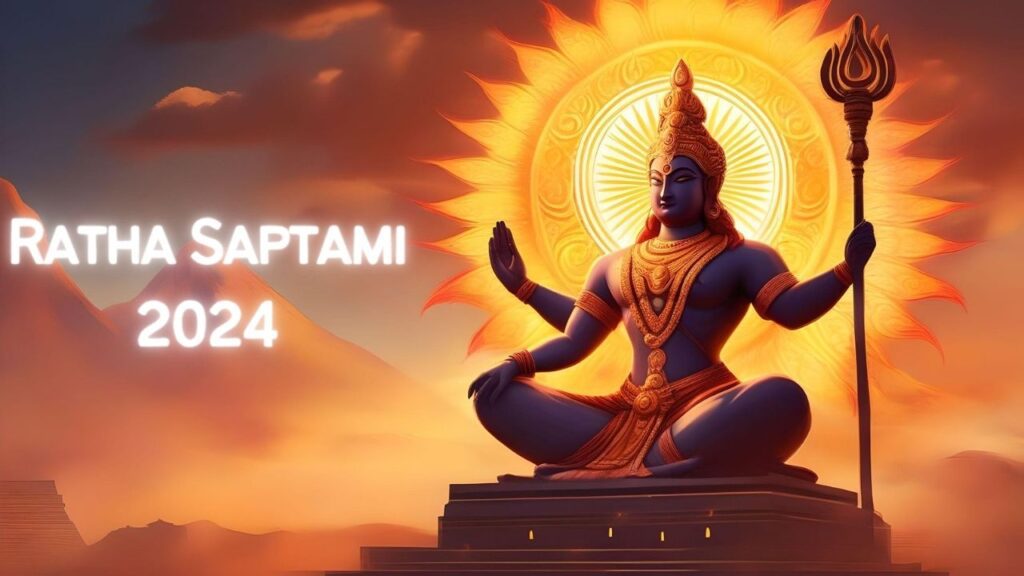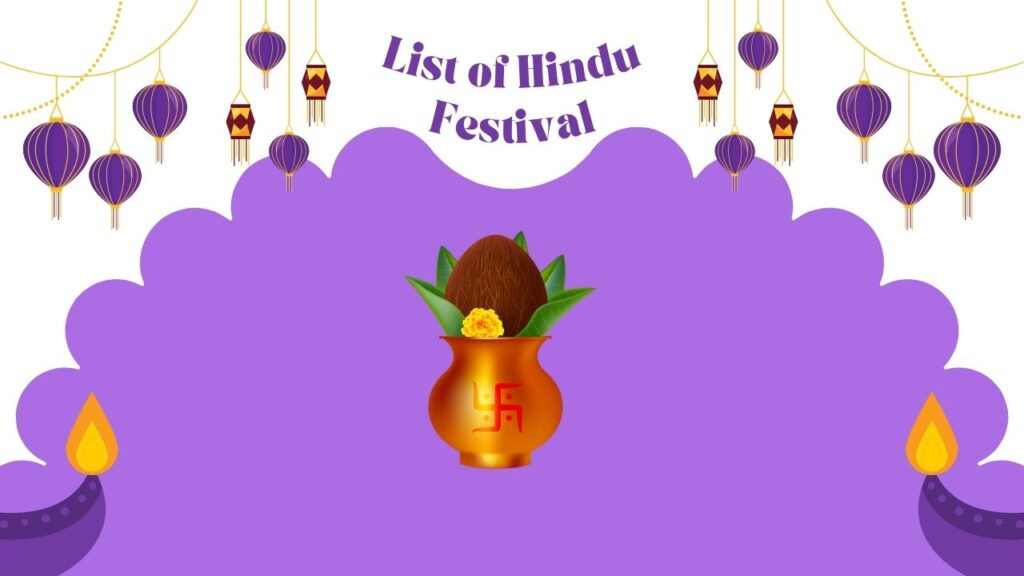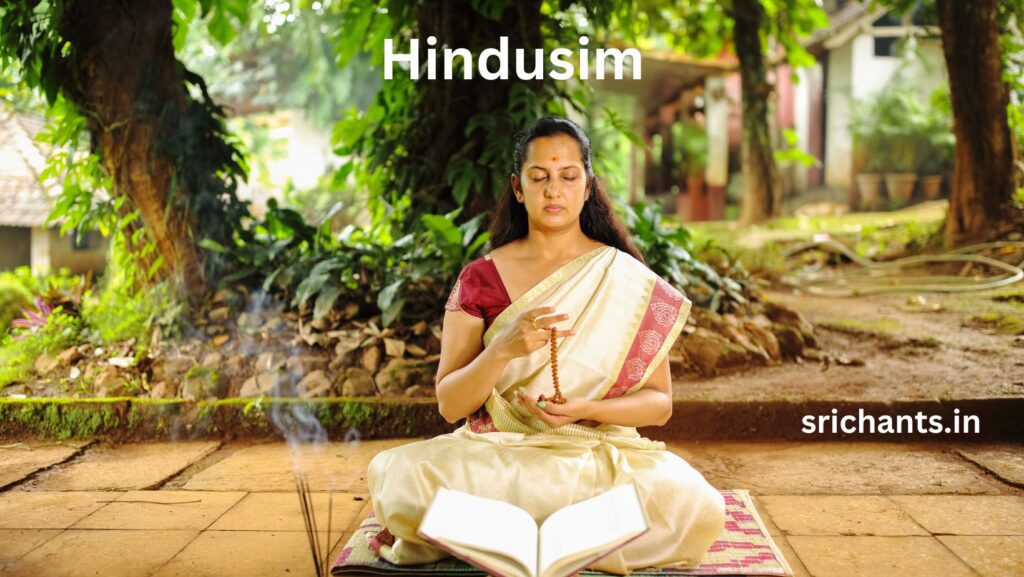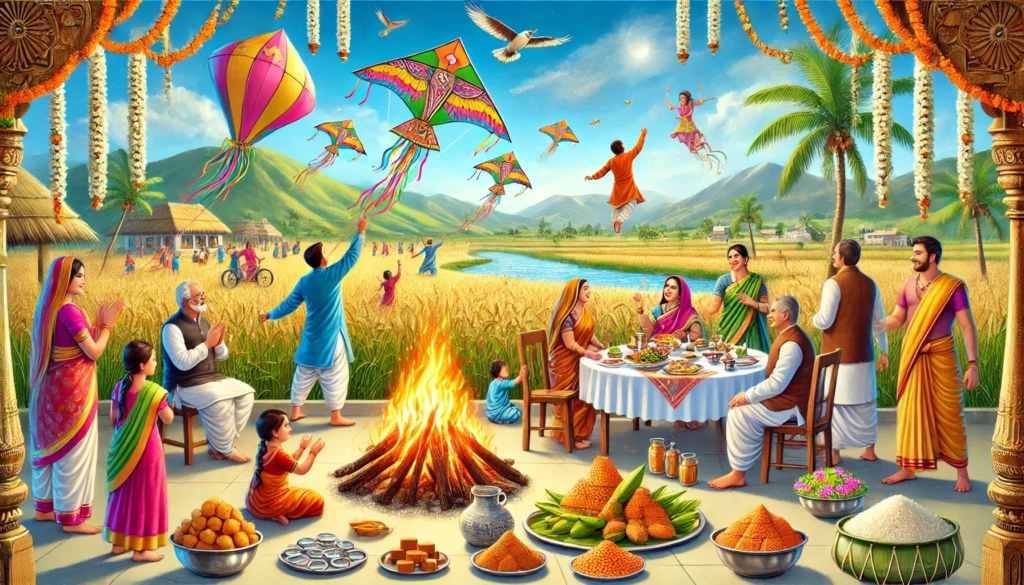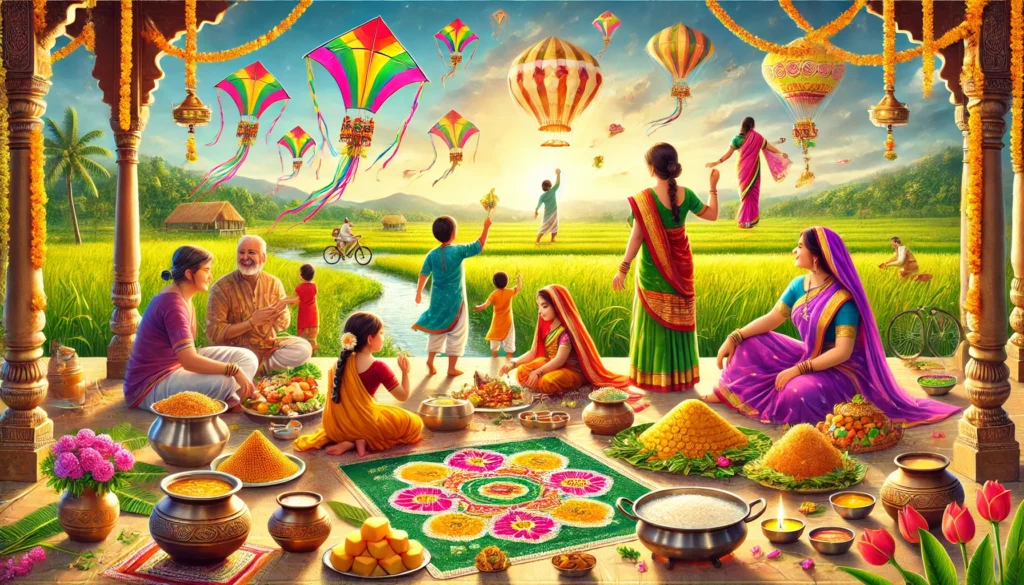Celebration of Makar Sankranti 2025 In India
Introduction
All around India, people celebrate Makar Sankranti with great fervor and happiness. The event takes place on January 14, 2025, when the Sun enters Makara Rashi (Capricorn), a change that signifies the arrival of warmer weather and the conclusion of the winter season. On Makar Sankranti, we not only rejoice in the bountiful harvest, but also take a time to give thanks to the earth and embrace good fortune.
The event, which goes by several names in different states—for example, Pongal in Tamil Nadu, Lohri in Punjab, and Uttarayan in Gujarat—is a great example of the cultural variety seen in India. During this time, family gather to celebrate with kite flying, traditional food preparation, and rituals that promote unity in spirit and community.
The Significance of Makar Sankranti
Among the few Hindu celebrations that follow the sun’s orbit, Makar Sankranti stands out. Due to its distinctive feature, it is observed annually on the same date. The significance of the festival is derived from:
1. Uttarayana
As the Sun enters Capricorn, it embarks on its northern trip, known as Uttarayana. In Hinduism, this six-month period is seen as a time of great spiritual growth and enlightenment.
2. The End of Winter
The harshest winter weather officially ends with Makar Sankranti. As the days become longer, we can feel more optimistic, warm, and energized, and we can look forward to a prosperous year ahead.
3. Gratitude for the Harvest
Thanks to nature and their hard work, farmers can celebrate. The Sun and the natural world are revered as life-giving forces throughout the celebration.
How India Celebrates Makar Sankranti
1. Kite Flying
Kite flying is the main attraction of Makar Sankranti in states such as Gujarat, Rajasthan, and Maharashtra. Friendly competitions and a plethora of brightly colored kites make for an exciting scene. Participating participants of all ages yell out “Kai Po Che!” whenever one of their opponents’ kites gets sliced.
2. Traditional Foods
One of the most important aspects of the party is the food. Sesame (til) and jaggery (gud) are common ingredients in many regional cuisines; they represent togetherness and hospitality. Here are a few hot commodities:
- Tilgul laddoos in Maharashtra
- Sakkarai Pongal in Tamil Nadu
- Khichdi in Uttar Pradesh and Bihar
- Pithe in West Bengal
3. Regional Celebrations
a. Tamil Nadu: Pongal
Tamil Nadu celebrates harvest time with Pongal, a four-day event. Pongal, a rice, jaggery, and milk dessert, is traditionally prepared by families on the major day. As a sign of good fortune, cows are revered, and kolams (rangoli motifs) adorn homes.
b. Punjab: Lohri and Maghi
The bonfire celebration of Lohri takes place in Punjab before Makar Sankranti. The whole family gets together to dance, sing, and throw peanuts, jaggery, and sesame seeds on the fire. Traditional dinners and holy dips are observed the following day to commemorate Maghi.
c. Gujarat: Uttarayan
Kite flying is an integral part of the Uttarayan celebration in Gujarat. While enjoying undhiyu and jalebi, friends and family compete with kites of all forms and colors.
d. Assam: Magh Bihu
Magh Bihu is a harvest festival in Assam that features communal games, bonfires, and feasts. People gather in makeshift shacks called Bhelaghar to feast and sing traditional melodies.
e. Maharashtra: Tilgul Tradition
As a greeting, the people of Maharashtra say, “Tilgul ghya, god god bola,” which translates to “Take this sweet and speak sweetly.” Goodwill and harmony are emphasized in this tradition.
Rituals and Practices
1. Holy Dips
Bathing in one of the holy rivers on Makar Sankranti—the Ganga, Yamuna, or Godavari—is thought to cleanse the spirit and remove sins. Prayagraj and Haridwar are popular destinations for pilgrims who wish to partake in this sacred ritual.
2. Donations and Charity
Kindness is promoted at the festival. A sense of kindness and compassion is on display when people give to those in need, whether it be food, clothing, or money.
3. Worship of the Sun God
The Sun is revered for the vitality it imparts. As a way to ask the Sun for good health and wealth, many people perform ceremonies including water offerings.
4. Community Bonding
During Makar Sankranti, people of all ages and backgrounds gather together. The festival brings people together via shared experiences, such as kite flying, cooking, and attending local fairs.
Scientific Importance of Makar Sankranti
Astronomically speaking, Makar Sankranti signifies the passage of time between the winter solstice and the beginning of longer days. Sunlight is good for you because it increases vitamin D production and strengthens your immune system.
Festive sesame and jaggery eating is associated with a host of health benefits as well. Winter is the perfect time to eat sesame and jaggery because the former aids in detoxification and the latter is rich in calcium and iron.
Interesting Facts About Makar Sankranti
- Fixed Date: Unlike most Indian festivals, which follow the lunar calendar, Makar Sankranti is based on the solar calendar and always falls on January 14 or 15.
- Multiple Names: The festival is known by various names across India—Pongal, Lohri, Uttarayan, Magh Bihu, and more—showcasing its cultural diversity.
- World Kite Festival: Gujarat hosts the International Kite Festival during Makar Sankranti, attracting participants from all over the world.
- Sesame Symbolism: The use of sesame seeds symbolizes warmth and togetherness. Sharing sweets made with sesame and jaggery represents strengthening bonds.
How to Celebrate Makar Sankranti in 2025
- Fly Kites: Spend time with friends and family flying kites. It’s a fun and engaging way to enjoy the day.
- Prepare Traditional Foods: Try making festive dishes like khichdi or tilgul laddoos.
- Participate in Rituals: Visit a nearby temple, take a holy dip, or perform prayers to the Sun God.
- Join Community Events: Attend local fairs or cultural programs to experience the festival’s vibrant spirit.
- Spread Kindness: Donate to those in need, spreading the festival’s message of compassion and sharing.
Conclusion
Makar Sankranti is a significant Hindu celebration in India, celebrated on January 14, 2025, when the Sun enters Makara Rashi (Capricorn), marking the end of winter and the arrival of warmer weather. The festival, known by various names across India, includes kite flying, traditional food preparation, and rituals that promote unity in spirit and community.
The significance of Makar Sankranti stems from the Uttarayana period, which is a time of spiritual growth and enlightenment during the northern trip of the Sun. The festival also signifies the end of winter, as the days become longer, and gratitude for the harvest is expressed through the celebration of the Sun and the natural world.
Regional celebrations include Pongal in Tamil Nadu, Lohri and Maghi in Punjab, Uttarayan in Gujarat, Magh Bihu in Assam, and Tilgul Tradition in Maharashtra. Rituals and practices include holy dips, donations and charity, worship of the Sun God, and community bonding.
Makar Sankranti is based on the solar calendar and falls on January 14 or 15. It is also known as the World Kite Festival in Gujarat, which attracts participants from around the world. Sesame seeds symbolize warmth and togetherness, while sharing sweets made with sesame and jaggery strengthens bonds.
To celebrate Makar Sankranti in 2025, fly kites, prepare traditional foods like khichdi or tilgul laddoos, participate in rituals, join community events, and spread kindness by donating to those in need. The festival serves as a reminder to count our blessings and share them with those less fortunate.
